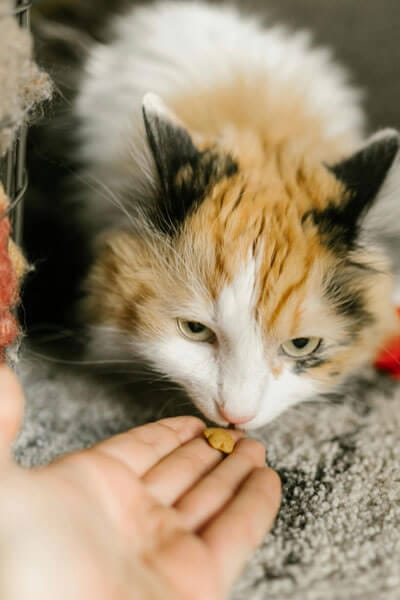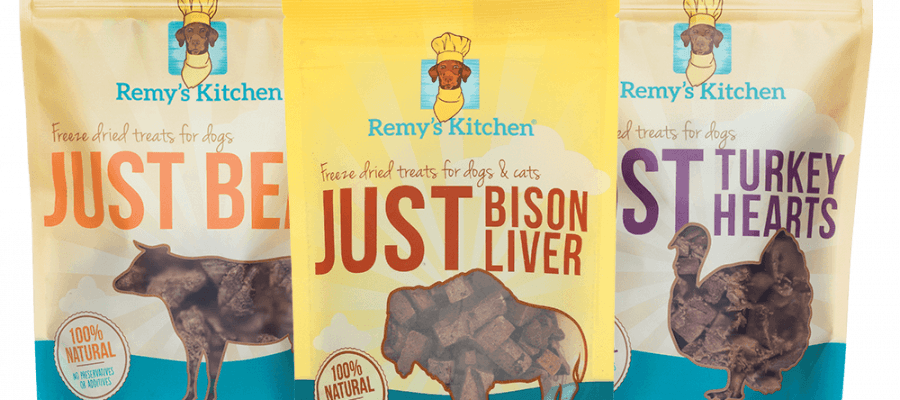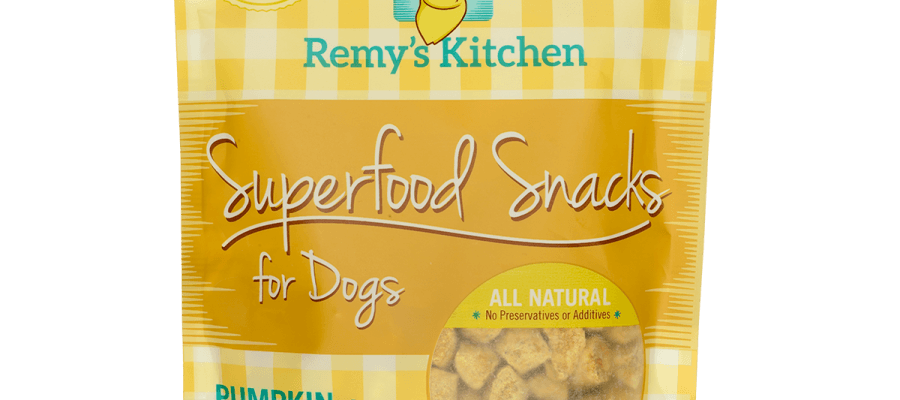
Cats deserve treats that are not only delicious but also nutritious. Many commercial options are packed with artificial additives, fillers, and unhealthy preservatives. That’s why natural cat treats are becoming the preferred choice for pet owners who want to prioritize their feline’s well-being. Choosing high-quality, minimally processed treats ensures your cat enjoys the best nutrition while avoiding unnecessary chemicals.
But what makes a cat treat truly natural? Are wet cat treats better than dry ones? And if you enjoy making DIY cat treats, how can you ensure they’re safe and beneficial? Let’s break it all down.
Why Natural Cat Treats Are the Best Choice
Many store-bought treats contain questionable ingredients that provide little to no nutritional value. Artificial flavors, colors, and excessive carbohydrates can contribute to weight gain, digestive issues, and allergies. On the other hand, natural treats focus on high-quality, whole-food ingredients that support your cat’s overall health.
Natural treats are typically made from real meat, fish, or single-source protein ingredients. They contain no artificial additives, grains, or fillers, making them easier to digest and more aligned with a cat’s carnivorous diet. By eliminating unnecessary chemicals, you ensure that every bite contributes to your cat’s well-being.
Key Ingredients in Natural Cat Treats
When choosing treats for your cat, look for these essential components:
- High-Quality Protein – Cats are obligate carnivores, meaning they require animal-based protein to thrive. Natural treats made with real chicken, turkey, beef, or fish provide essential amino acids to maintain strong muscles and energy levels.
- Limited Ingredients – The fewer ingredients, the better. Treats with simple, recognizable ingredients are easier to digest and less likely to cause allergies or sensitivities.
- No Artificial Additives – Preservatives, artificial colors, and synthetic flavor enhancers can lead to digestive issues and long-term health problems. Opt for treats that use natural preservation methods like freeze-drying.
- Moisture-Rich Options – Some cats prefer wet cat treats over crunchy options. Moist treats help with hydration and can be beneficial for cats prone to urinary issues.
How to Incorporate Natural Treats into Your Cat’s Routine
Natural treats can be used in various ways beyond just rewarding good behavior. Here’s how you can make the most of them:
- Training and Positive Reinforcement – Use small, bite-sized treats to encourage good habits, such as coming when called or using a scratching post.
- Meal Toppers – Crumbling natural treats over dry kibble or wet food can enhance flavor and add a nutritional boost to your cat’s diet.
- Bonding Time – Offering a treat during playtime or grooming sessions can strengthen your relationship with your cat and create positive associations.
DIY Cat Treats: Are Homemade Treats Better?
If you enjoy making DIY cat treats, homemade options can be a great way to ensure your feline gets fresh, high-quality ingredients without unnecessary fillers or preservatives. Preparing treats at home allows you to customize recipes to suit your cat’s dietary needs, especially if they have allergies or sensitivities.
Some simple homemade recipes include:
- Baked Chicken Bites – Shredded chicken mixed with egg, then baked into small, bite-sized pieces.
- Salmon and Pumpkin Puree – A soft, hydrating treat that supports digestion and is rich in Omega-3s.
- Freeze-Dried Meat Cubes – Small portions of raw beef, turkey, or chicken freeze-dried for maximum nutrient retention and long shelf life.
- Tuna and Egg Mash – A protein-packed option that’s easy to prepare and loved by most cats.
While DIY cat treats provide more control over ingredient quality, proper storage is essential. Since homemade treats lack preservatives, they should be refrigerated or frozen to maintain freshness.
Are Wet Cat Treats a Good Option?
Many cats enjoy wet cat treats due to their soft texture and strong aroma, making them an appealing option for felines of all ages. They can be especially beneficial for senior cats, kittens, or those with dental sensitivities who may struggle with harder treats. The moisture content in these treats can also provide additional hydration, which is particularly helpful for cats that don’t drink enough water.
However, not all wet treats are created equal. Some contain unnecessary thickeners, artificial flavors, or added sugars, which don’t provide real nutritional benefits. When selecting wet cat treats, focus on options where real meat or fish is the primary ingredient and avoid those loaded with excess carbohydrates, plant-based fillers, or artificial preservatives.
For pet owners looking for natural, high-protein alternatives, freeze-dried treats can be a great option. They offer all the benefits of real meat while maintaining long shelf life and retaining essential nutrients without added fillers.
Can Dog Treats Be Safe for Cats?
If you have both cats and dogs, you might wonder whether your feline can share safe dog treats. The answer depends on the ingredients and nutritional content. Some of the best dog snacks, particularly freeze-dried single-ingredient meats like chicken or salmon, can be a safe option for both cats and dogs. However, many commercial dog treats are formulated specifically for canine dietary needs, which differ significantly from what cats require.
Cats are obligate carnivores, meaning they rely on high-protein, meat-based diets with essential nutrients like taurine, which supports heart and vision health. Most dog treats don’t contain enough taurine, and some may include plant-based fillers, grains, or artificial ingredients that aren’t beneficial for cats.
If you consider giving your cat a dog treat, ensure it’s high in animal-based protein, grain-free, and free from toxic ingredients like garlic, onion, or excessive sodium. Always read the ingredient list carefully and prioritize treats designed to meet your cat’s specific dietary needs.
What Shampoo Is Good for Dogs and Why It Matters for Multi-Pet Homes
If you have both cats and dogs, you may find yourself wondering, what shampoo is good for dogs, and whether it can be safely used on cats. While some natural, fragrance-free dog shampoos might be gentle enough for both pets, it’s important to consider their different skin pH levels. Cats have more sensitive skin than dogs, meaning even mild dog shampoos can disrupt their natural oil balance and cause irritation.
When selecting a shampoo, look for hypoallergenic, chemical-free options made with natural ingredients. Avoid products with parabens, sulfates, or artificial fragrances, as these can trigger allergic reactions, dry out the skin, or cause discomfort for both dogs and cats. If your pet has sensitive skin, oatmeal-based or aloe-infused shampoos can help soothe irritation and maintain hydration.
For multi-pet households, the best approach is to choose species-specific shampoos. Using a dog-specific shampoo for your canine and a cat-friendly formula for your feline ensures that each pet gets the right kind of care for their unique skin and coat needs.
Why Choose Remy’s Kitchen for Natural Cat Treats?
For pet owners looking for high-quality, natural cat treats, Remy’s Kitchen provides protein-rich, freeze-dried options that align with a cat’s dietary needs. Their treats are crafted with minimal processing, ensuring your cat gets the best nutrition without unnecessary fillers.
Unlike processed kitty treats that contain artificial flavors, grains, or preservatives, Remy’s Kitchen treats are made with 100% real meat, offering a pure, high-protein option. The freeze-drying process locks in essential vitamins and minerals naturally, preserving the nutrients that cats need to stay active and healthy.
If you have both cats and dogs at home, these treats are perfect for multi-pet households, as they are safe for both species. This eliminates the need to buy separate treats, making snack time easier and more convenient.
Additionally, Remy’s Kitchen treats are gentle on digestion, making them ideal for cats with food sensitivities or allergies. Many commercial treats contain grains, artificial additives, or plant-based fillers that can cause stomach upset, but with single-ingredient freeze-dried treats, you can avoid these risks.
By incorporating Remy’s Kitchen natural treats into your cat’s routine, you’re giving them a wholesome, high-protein reward that not only satisfies their cravings but also supports their overall health and well-being.
Final Thoughts: Making the Switch to Natural Treats
Switching to natural cat treats is one of the best choices you can make for your feline’s health. Whether you opt for store-bought freeze-dried options or try your hand at DIY cat treats, the goal is to provide your cat with real, nutritious ingredients free from artificial additives.
Natural treats ensure your cat gets the right balance of protein, vitamins, and minerals without harmful fillers that can lead to weight gain or allergies. They also support digestion, energy levels, and overall well-being, making them a smarter choice over highly processed alternatives.
Understanding the benefits of wet cat treats, identifying safe dog treats for multi-pet homes, and knowing what human food is good for cats all contribute to making informed decisions about your pet’s diet. By choosing high-quality, natural options like those from Remy’s Kitchen, you ensure that every treat enhances your cat’s health, making treat time both enjoyable and beneficial.




